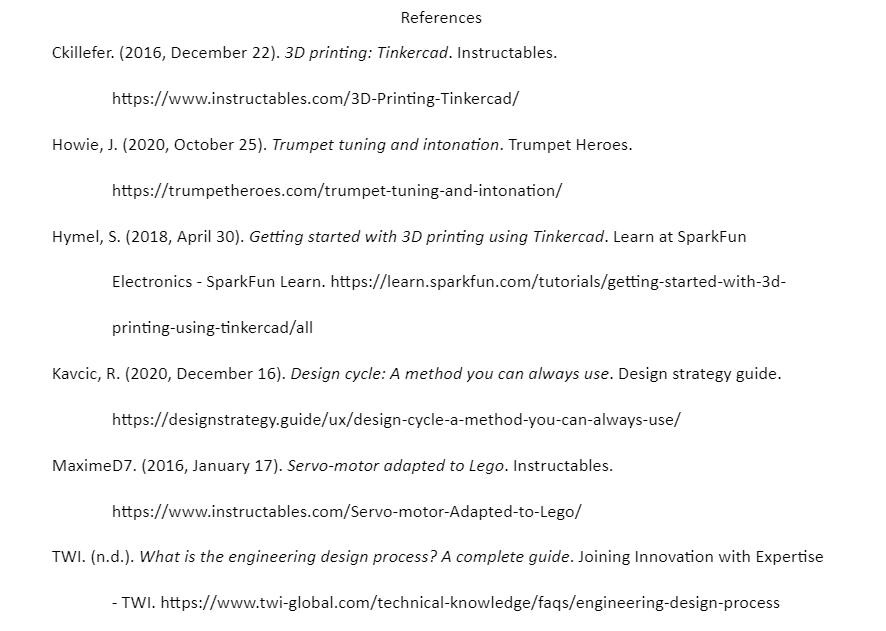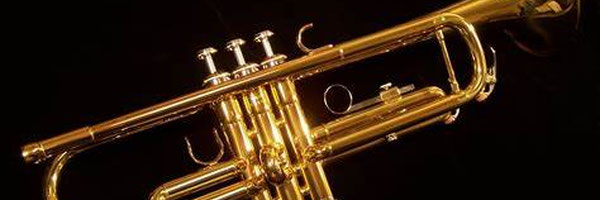Automatic Trumpet Tuner
Grade 8
Presentation
Problem
Trumpet players have difficulty tuning their trumpet and adjusting its length in one simple motion. Instead, they must adjust the length after blowing through the trumpet, which is time consuming and requires multiple attempts until the device is properly tuned.
Method
1. Create initial schematics and 3D models(a case holding all of the wires and Lego pieces, a rectangular prism supporting the motor, and a holder for the tuning slide)through modelling softwares like Tinkercad.
2. Add holes in the casing for the rubber straps to go through.
3. Order the required Lego pieces to support the 3D model.
4. Purchase motors, wires, batteries, switches, and tools to turn the schematics into reality, and zipties and rubber straps to condense the wires and hold the automative trumpet tuner onto the trumpet.
5. Using tile pieces, gear racks, and plates to create the structure of a pushing rod and the guiding walls.
6. Modify the main tuning slide holding piece to suit the Lego structure.
7. Print the 3D models utilizing a 3D printer.
8. Attach the tuning slide holder with the Lego rod using adhesives like super glue.
9. Attach the motor-supporting box with the case.
10. Wire the gear box motor, a switch, and a 3V battery case utilizing wires.
11. Assemble all of the physical elements inside the box and use zipties to hold the wires in place.
12. Test the tuner on to a trumpet.
Analysis
To analyze the procedure and the innovation itself, there have been many positives, yet a few areas of improvements existed. The main positives were the creative solutions utilizing various notions to solve problems that occurred during the making of this machine. The first problem was that velcro straps weren’t grippy enough to successfully hold the box onto the trumpet. To fix this, rubber straps replace the velcro straps due to its rubbery surface. Another problem encountered was that some proportions, especially, the size of the holes for the rubber straps, weren’t the expected size. This problem had a simple solution; to enlarge the holes which made the rubber straps fit in the holes. Another major issue was that out of a little more than 5 cm of height that could be used in the box, the motor had a diameter of more than 4.8 cm. To solve this problem, the benefit of a constantly circulating gear was exchanged with the size by using just a quarter of the gear. These examples show that the greatest positive of the procedure was critically analyzing the problems and thinking of creative solutions for these issues. There were some areas of improvements too. Although there was definite planning involved before the building of the physical components, measurements would have helped. A great instance of this is using a 40 teeth gear, which consumed a large proportion of the box, when a 24 teeth gear would have done just fine. Moreover, in the future, it would be ideal if the dimensions of the device were smaller and, most importantly, the innovation would have been much more revolutionary if instead of the switch, it communicated with an electric tuning device with signals, so that it is completely hands free. After the science fair, these new concepts will be implemented to make this device more revolutionizing.
Conclusion
In conclusion, designing a device that can tune a trumpet without needing multiple adjustments was successful. Instead, my device uses a battery pack and motor to push the trumpet tuner in one smooth motion, all the while the user blows through the trumpet. Unlike when tuning normally, this process is hands free, and the user can check the electronic tuner that is used by musicians normally to see if they are in key. When they are in key they can press the switch on the box and the device will stop at the correctly tuned location. This is an improvement because it is faster and easier than the normal method for tuning a trumpet. The innovation’s goal was to solve the initial problem of trumpet players having to tune by blowing the instrument multiple times and changing the length of the tuning slide. Since this problem has been fixed using this innovation, this project was an effective solution.
Citations

Acknowledgement
I have received a lot of help and support while making this project. My parents have purchased all of the necessary tools and items for my project. Mr. Simon, Mr. Schweitzer, and Mr. Race has helped me 3D print the necessary parts. Also, Mr. Willoughby helped me with the general science fair schedule and answered all of my questions regarding the fair. There are plenty of more people that supported me.

